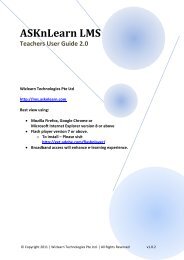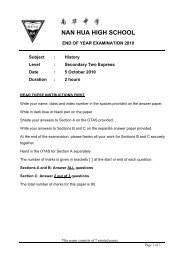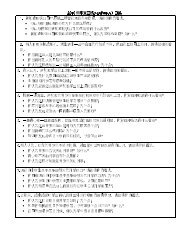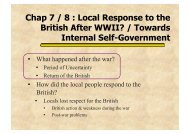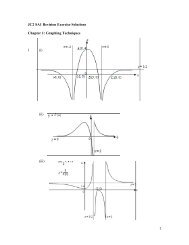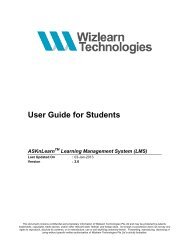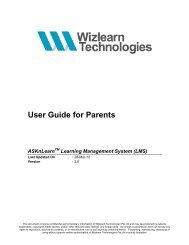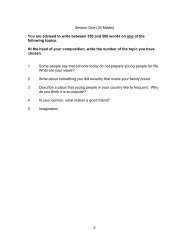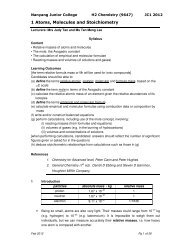Suggested Answers of BT2 Revision Package - ASKnLearn
Suggested Answers of BT2 Revision Package - ASKnLearn
Suggested Answers of BT2 Revision Package - ASKnLearn
- No tags were found...
You also want an ePaper? Increase the reach of your titles
YUMPU automatically turns print PDFs into web optimized ePapers that Google loves.
Part (b)1. Explain how the policy is intended to work to help stabilise / moderate increase in foodprices.The policy to release grains and frozen meat from the state stockpiles increases themarket supply, pushing prices down.Release supply from the government’s stockpile à surplus forms at current price àdownward pressure on prices as firms cut prices to rid the surplus à as price falls,quantity demanded rises while quantity supplied falls à price will continue to fall untilthe market eventually clears where quantity demanded exactly balances quantitysuppliedGraph + accompanying explanation2. Thesis: success <strong>of</strong> policy depends on PED and PESa. Relevance <strong>of</strong> PEDFor any given increase in ss, the extent by which prices fall depends on PED.Demand for food items tend to be price inelastic (more so for grains which are seen asstaple than meat). With demand for grains being more price inelastic, prices will haveto fall more to induce a large enough increase in quantity demanded to clear themarket <strong>of</strong> the surplus created by the release <strong>of</strong> supply from the government’sstockpile. The converse is true <strong>of</strong> meat.Graph + accompanying explanationb. Relevance <strong>of</strong> PESFor any given demand curve and increase in supply, the extent by which prices falldepends on PES.Supply <strong>of</strong> meat is likely to be more price inelastic compared to supply <strong>of</strong> grains. Whenthe government releases frozen meat from its stockpile, a surplus <strong>of</strong> meat (frozen andfresh) is formed at the original price. For the farmers, the need for refrigeration makesit costly for them to store meat. To continue to hold on to their stocks <strong>of</strong> animalsinvolves costs on a daily basis. For these reasons, farmers are more prepared toaccept lower prices for meat products in the face <strong>of</strong> a surplus. In contrast, it is cheaperto store grains. When there is a surplus, farmers would more readily store grainshoping to sell at higher prices in the future than to accept lower prices at the currentpoint in time. Quantity supplied <strong>of</strong> grains will therefore fall by a larger extent inresponse to any given fall in price as compared to meat.Graph + accompanying explanation



